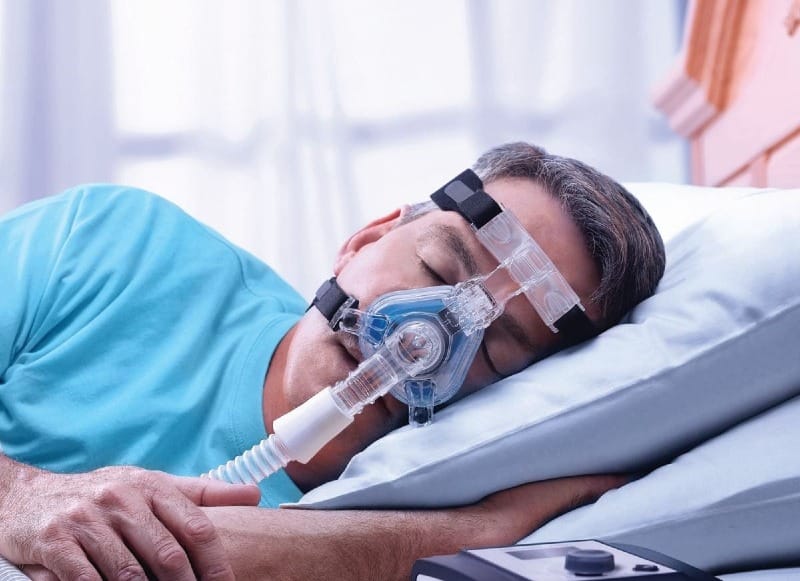Sleep is essential for our overall health and well-being, but for millions of people worldwide, a good night's rest remains elusive due to a condition called obstructive sleep apnea (OSA). Now, researchers at Royal Papworth Hospital NHS Foundation Trust are exploring an innovative approach that combines two existing treatments, potentially offering new hope for those struggling with this common sleep disorder.
Key Takeaways
- Obstructive sleep apnea affects about 5% of adults aged 30-70.
- The study combines CPAP therapy with a mandibular advancement device (MAD).
- This combination may improve treatment tolerance and effectiveness.
- Results could lead to better quality of life for OSA patients.
- The study is part of the broader Love Research campaign in Cambridgeshire.
Understanding Obstructive Sleep Apnea
Obstructive sleep apnea is a condition where the throat muscles relax excessively during sleep, blocking the airways and causing brief but frequent awakenings throughout the night. This disruption prevents sufferers from reaching the deep, restorative stages of sleep, leading to daytime sleepiness and increased risk of various health complications.
Prevalence and Impact
OSA is more common than many people realize. According to the research at Royal Papworth Hospital, approximately 5% of adults between 30 and 70 years old suffer from moderate to severe OSA[3]. This translates to millions of individuals whose daily lives and long-term health are significantly impacted by the condition.
The effects of OSA extend beyond just feeling tired during the day. Dr. Tim Quinnell, a consultant respiratory and sleep disorders physician at Royal Papworth and lead investigator in this trial, emphasizes the broader implications: "Effective treatment for this condition can have a significant impact on an individual's quality of life, as well as helping to reduce the socioeconomic costs associated with OSA, such as days lost from work through sickness and even things like road accidents caused by sleepiness"[3].
Current Treatment Options
Before delving into the new research, it's important to understand the existing treatments for OSA.
Continuous Positive Airway Pressure (CPAP)
CPAP is currently considered the gold standard treatment for OSA[7]. It involves wearing a mask connected to a machine that delivers pressurized air to keep the airway open during sleep. While effective, CPAP can be challenging for some patients to tolerate, especially at higher pressures.
Mandibular Advancement Devices (MAD)
MADs are mouth devices similar to gum shields that hold the lower jaw and tongue forward, creating more space to breathe during sleep[3]. They are often used as an alternative to CPAP, particularly for milder cases of OSA.
The Innovative Combination Approach
The new research at Royal Papworth's Respiratory Support and Sleep Centre is exploring whether combining CPAP and MAD treatments could offer better results for patients with severe OSA.
The Rationale Behind the Combination
The idea is that by using both treatments simultaneously, patients might be able to use CPAP at lower pressures while still receiving effective therapy. Dr. Quinnell explains the reasoning: "The question is, what can be added to CPAP to help patients tolerate it better? When combined with MAD, for example, would CPAP work just as well at lower pressures, and so make CPAP easier for patients to tolerate?"[3]
Study Design
The clinical trial involves 64 patients with severe OSA. Here's how it works:
- Patients are divided into two groups.
- One group uses CPAP alone for 10 weeks, while the other uses CPAP combined with a MAD.
- After 10 weeks, the groups switch treatments.
- The study monitors CPAP usage hours and required pressure levels.
- Patients complete quality of life and symptom questionnaires to assess their experiences.
Potential Benefits and Challenges
If successful, this combination approach could offer several benefits:
- Improved Treatment Tolerance: Lower CPAP pressures could reduce side effects like mask leaks and dry mouth, making the therapy easier to use consistently.
- Enhanced Effectiveness: The dual approach might provide more comprehensive airway support, potentially leading to better sleep quality.
- Better Quality of Life: More tolerable and effective treatment could significantly improve patients' daily functioning and overall well-being.
- Cost-Effectiveness: In collaboration with King's College Hospital NHS Foundation Trust, the study is also examining the economic implications of this combined therapy.
However, there are also potential challenges to consider:
- Complexity: Using two devices might be more cumbersome for some patients.
- Comfort: The combination could potentially cause more sleep disruption for some individuals.
- Cost: If both devices are required, the treatment might be more expensive than single-therapy approaches.
Broader Context: The Love Research Campaign
This study is part of a larger initiative called the Love Research campaign, which involves three Cambridgeshire-based hospital trusts. The campaign aims to raise awareness about ongoing healthcare research and encourage more staff-patient conversations about research participation[3].
This context is important because it highlights how this OSA study fits into a broader effort to advance medical knowledge and improve patient care across various health conditions.
Looking Ahead: Implications and Future Directions
The results of this study, expected next year, could have significant implications for OSA treatment:
- Treatment Guidelines: If successful, the combination approach could be incorporated into clinical guidelines for managing severe OSA.
- Personalized Care: The findings might lead to more tailored treatment plans, considering individual patient needs and preferences.
- Further Research: This study could pave the way for more investigations into combination therapies for sleep disorders.
- Technology Development: The results might inspire innovations in CPAP and MAD design to better facilitate combined use.
Conclusion
While the outcome of this research is yet to be determined, it represents an important step in the ongoing effort to improve treatment for obstructive sleep apnea. Dr. Quinnell emphasizes the value of this investigation: "Part of the usefulness of a clinical trial like this is not only to find whether a treatment works, but also how best to deliver that treatment. We may get a negative answer, but it's an important question to ask because OSA is a very common condition with significant implications"[3].
For the millions of people affected by OSA, this research offers hope for more effective, tolerable treatments that could significantly enhance their quality of life. As we await the results, it's clear that the field of sleep medicine continues to evolve, driven by innovative approaches like this combination therapy study at Royal Papworth Hospital.















Member discussion